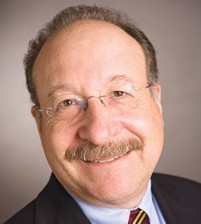Dubroff: SBA soaring even higher behind new airport director
It’s been just about a year since Chris Hastert left the Santa Maria airport to take the top job in Santa Barbara.
So far, he’s off to an impressive start.
Santa Barbara Airport was recently upgraded to “small hub” status by the Federal Aviation Administration, recognizing that there is a growing number of connecting passengers.
Traffic is set to jump again when Delta returns with flights to Salt Lake City for the first time in a decade, and the first-ever flights to Atlanta.

And under a Terminal Improvement Project, part of a long-term plan that’s being updated, more than $100 million in improvements are being rolled out in stages.
More gates, more seating, a new restaurant, and a lot more parking are in the works — and restoring a flight to San Jose is also on the table.
“We have achieved a level of success” that’s come “a little faster than expected,” Hastert told me in an extended phone call on October 31. “The perception has changed.”
The move to all-jet fleets, the arrival of Southwest with multiple flights and discount fares, soaring demand for outdoor activities in the post-COVID era and the region’s growing core of business travelers all contributed, Hastert said.
“It was a little bit of everything,” he said.
Already, the former general aviation corridor on the south or channel-facing side of the airport is being transformed into what will eventually be a second 500 to 600-space long-term parking area, with additional parking for rental cars.
The general aviation facilities occupying the north side of the airport along Hollister Avenue, are preparing for new facilities for two fixed-based operators. Given the lucrative private jet market in Santa Barbara, aviation experts expect there will be spirited bidding for spots currently used by Atlantic and Signature Aviation.
Those will be privately funded and are expected to cost $30 million each.
The crowded terminal represents a dramatic change from a decade ago when you could roll a bowling ball from end to end without hitting anyone.
The Improvement Project envisions two new gates, bringing the total to six, with a major expansion on the south end of the terminal to accommodate the two new jet bridges.
The plan envisions a 60-seat restaurant upstairs with a view of the landing field that will allow for better flow through the middle of the now-crowded concourse.
“People love to watch planes land and take off,” Airport Commissioner Dennis Houghton told me during a recent visit to the airport offices.
There will be better lighting in the baggage area, a much bigger holding area near Gate 5 at the north end of the terminal and better flow up and down the escalators into security and out of the airport.
As an enterprise fund of the city, the improvements on and off the field will be paid for by concessions, landing fees and parking revenue that has become a gold mine, now that lots are full most of the time.
Hastert thinks the growing traffic in Santa Barbara has had benefits for San Luis Obispo and Santa Maria.
“If an airline comes in that doesn’t serve the market, it’s going to Santa Barbara first. You generate loyalty with customers and now we complement each other,” with different schedules, he said, noting that people on the Central Coast would prefer to drive south for flights.
Over the long run, he said, that means a fresh opportunity for Santa Barbara to attract travelers who are still driving to LAX.
Vastly improved avionics technology has made the Santa Barbara and SLO airfields much more viable for the Airbus and Boeing mainline jets that are frequent users of both airports.
Speaking of technology, Hastert said the airport has been talking to airlines about restoring the San Jose service that’s coveted by venture capital types and executives.
By building a second surface lot it hopes to avoid the costly design and construction of a parking structure, though additional growth could make that inevitable.
The plan will include a permanent baby changing station, a pet relief area and more electric charging stations for vehicles.
Beginning next year there will be more signs that the Improvement Project is taking shape. But the airport, with a small team of engineers and planners, doesn’t like to stray too far from its roots.
“We are tied to the business community and what is going on around us,” said Hastert.
Henry Dubroff is the founder, owner and editor of the Pacific Coast Business Times. He can be reached at [email protected].









